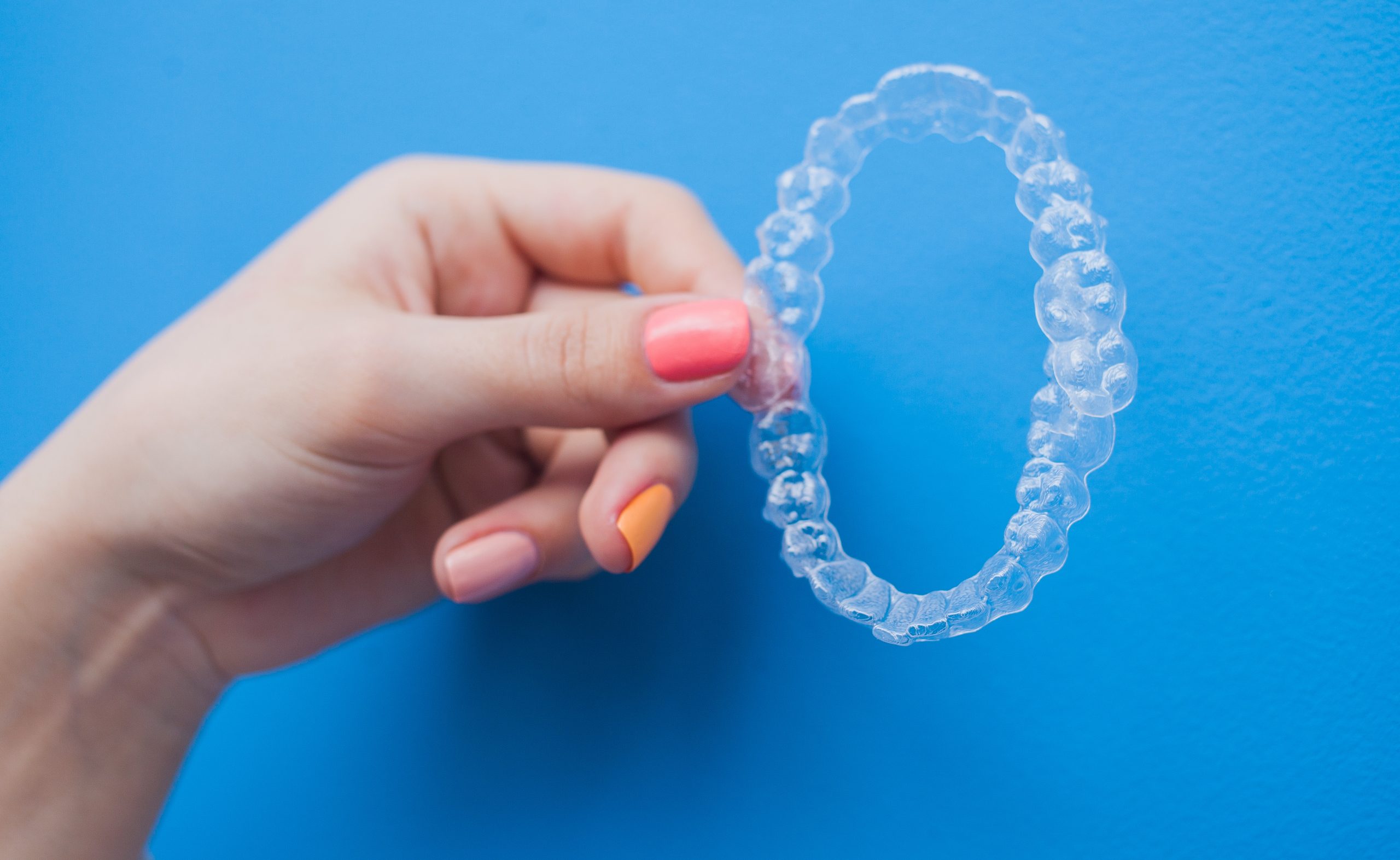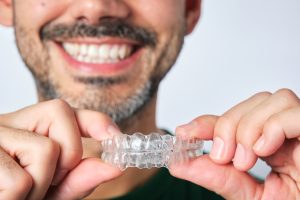While braces made out of metal wires and brackets may have been the standard for teeth straightening since their invention in 1819, many people who have used them have expressed dissatisfaction with them. Much of this dissatisfaction stems from their look: No one actually likes the look of having a mouth full of wires and brackets that interrupt an otherwise lovely smile.
In response, orthodontists have developed clear braces and a host of other orthodontic appliances that work just as well as traditional braces, but aren’t as, ahem, distracting. Here’s what you need to know about them.
What are Clear Braces?
Clear braces work just like conventional metal braces; that is, they use wires and brackets that are under constant tension to move teeth slowly into their proper position. However, clear braces are made from transparent plastics, clear wires, and sometimes from ceramics as well.
By carefully placing the brackets on the teeth and tightening the wires, your orthodontist can cause your teeth to move in any direction until they’re properly aligned. Typically, those who wear braces usually have them in for between 18 and 24 months, although this depends on the severity of the case.
Also, anyone looking for a more understated tooth straightening option may want to explore clear plastic aligners. These are custom-made metal trays that fit on top of and around the teeth, slowly spacing them and moving them into better position. These will be discussed more in the following section.
What are the different types of clear braces?
If we’re using “clear braces” as an umbrella term for all kinds of orthodontic appliances that straighten teeth but are difficult to see, then there are several kinds of clear braces. These differ in the materials they’re made from and how they’re designed to work, but all of them straighten teeth and are meant to be less obvious than traditional metal braces.
Ceramic braces
We’ve discussed ceramic braces pretty extensively so far, but some other things that you should know about them: The brackets that are used for these braces tend to be a bit smaller than metal ones, and since they’re also close in color to the teeth themselves, they’re much less conspicuous than metal braces. They usually feature metal wires, but certain designs may have white wires that are less visible. Finally, the bonding agent used to affix the ceramic brackets is usually gentler than the substance used for metal ones, so removing them is a bit easier.
Lingual Braces
Lingual braces are more or less identical to metal braces in every way, except for one major difference: While metal braces have brackets that are affixed to the front of the teeth, lingual braces are affixed to the back of the teeth, in the interior of the mouth. These aren’t technically “clear” braces, but they do serve the same purpose and fulfill the same objectives that clear braces do. However, these can be difficult to clean, and because they’re close to the soft tissues of the palate and the underside of the tongue, they can cause mouth wounds and sores more frequently.
Clear aligners
Clear aligners have become the popular choice for people who want versatility and subtlety while also achieving great-looking results when it comes to straightening their teeth. These are made from a high-tech plastic that has just the right balance of rigidity and flexibility, fitting snugly around the teeth to move them into their proper positions slowly and gently. The whole treatment plan features a series of trays that the user swaps out about every week or so.

What are the reasons to choose clear braces?
Clear braces, aligners, and even lingual braces provide some definite advantages over traditional braces
1. Clear braces can give you a boost in confidence
Let’s face it: Metal braces are kind of a buzzkill. They’re very conspicuous and can cause users to feel self-conscious about speaking or appearing in public. This can become complicated, especially for employed people who have to make presentations or take meetings regularly.
Clear braces do away with all that awkwardness. They can even give users a shot of confidence, knowing that they can look their best while also working towards creating their most beautiful smile.
2. Clear braces produce great results
While clear braces are a subtler option than traditional ones, this doesn’t mean they aren’t effective at repairing almost every tooth alignment issue. The truth is, they work just as well at fixing common orthodontic issues, including gaps, overcrowding, overbites, and underbites.
3. Better oral health overall
Having straighter teeth has many other oral health benefits and isn’t done just for aesthetic purposes. Keeping teeth from crowding and eventually grinding into one another prevents them from wearing away. Reducing the gaps between them decreases the likelihood of food particles getting trapped between teeth and developing cavities.
How much is clear braces in the Philippines?
Clear braces, aligners, and lingual braces all have different price points in the Philippines. For clear or ceramic braces, these often cost more than traditional braces, as the material needed for them is more expensive than the materials used for metal braces. Expect to spend between Php 80,000 and Php100,000 for ceramic or clear braces.
Clear aligners are the top-shelf item among the three clear braces options we’ve discussed here, and can cost up to Php250,000 or more, depending on how complex the case is. Thankfully, with ALINA aligners, you can get flexible payment options that will help you manage your costs.
Finally, lingual braces are often difficult to adjust and install, and require specialized training on the part of the orthodontist to put in. These can cost Php 80,000 or more.
Invisible braces prices definitely vary greatly, so choose the best one for you and your lifestyle.
Invisible Braces and ALINA
ALINA Invisible Braces are different from all other designs of invisible braces and aligners. Our designs start with AlinaSmile technology, a 3D scan of the entire head and face that considers all features to determine the patient’s most beautiful smile. Then, the trays are molded out of space-age materials to move the teeth into their ideal position. Over a million people in the US and Canada have been able to uncover their smiles with the help of ALINA, and now, Filipinos can start uncovering theirs too. This is just an overview of how ALINA works.
Book a consult today and get started on your journey to your most beautiful smile today!






